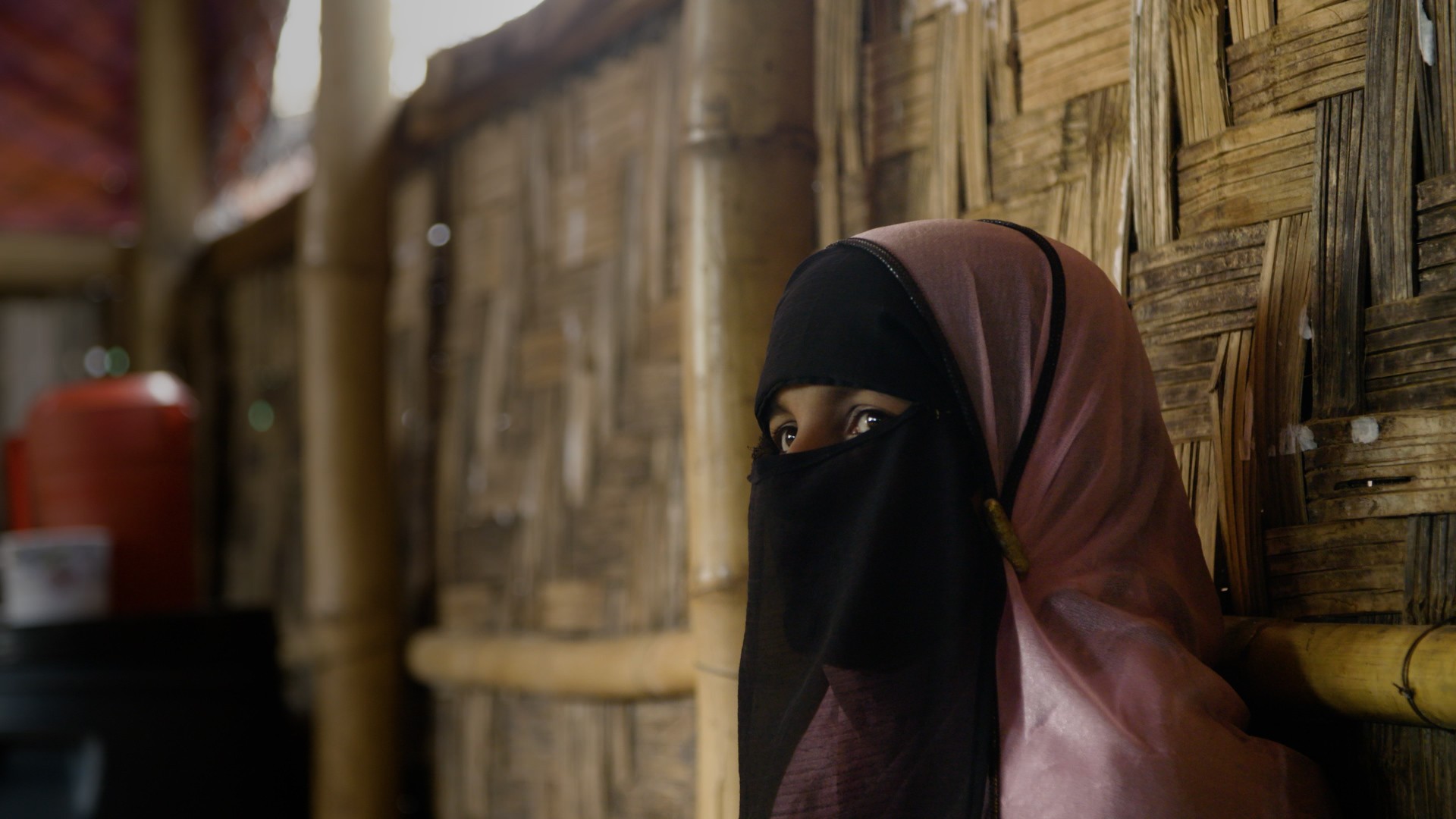Before a COVID-19 outbreak hit Myanmar’s Rakhine State in mid-August, Thiri Kyaw, whose name has been changed to protect her identity, already had a lot to worry about.Displaced by civil war between the Myanmar military and the rebel Arakan Army, she has faced uncertainty about her daily survival since fleeing her village in March of last year. On top of this, she now fears what could happen if the coronavirus reaches the displaced person camp where she shares a small room with four of her family members.
The coronavirus pandemic has heightened fear in IDP camps in Rakhine
Residents of the town of Mrauk-U in Rakhine State, Myanmar gather around a COVID-19 information board created by a local civil society organization. Following a fourteen-month block on all internet services, the Myanmar government restored 2G services in August but continues to block 3G and 4G networks in eight conflict-affected townships, including Mrauk-U. Photo: Supplied.
Phyo Aung, whose name has been changed to protect his identity, is a healthcare worker at a village hospital in Mrauk-U township. He told VICE News that he, too, worries about what could happen if COVID-19 spreads to the township’s IDP camps.The hospital where he works, which services both IDPs and local villagers, has shut down at times due to the conflict. He said that last year, during a period of heavy fighting, the staff evacuated for a month.In early August, the hospital’s only doctor resigned, and no one has yet been announced to replace him, according to Phyo Aung. He said internet restrictions add another challenge. In June 2019, the government cut off internet access to nine conflict-affected townships in Rakhine and Chin, later restoring access to one township. Although 2G services were restored in the remaining townships this August, the government continues to block 3G and 4G networks, maintaining that the restrictions are a necessary security measure in the public interest, and at times prosecuting and jailing those who dissent.“I feel safer here than in my village, but sometimes I feel like I will never be safe as long as I live in Rakhine,” she said.
People sit at the top of a hill searching for a 3G internet signal in Mrauk-U, Rakhine State, Myanmar. Following a fourteen-month block on all internet services, the Myanmar government restored 2G services in August but continues to block 3G and 4G networks in eight conflict-affected townships, including Mrauk-U. Taken on August 26. Photo: supplied.

A few shipments of masks and hand sanitizer have reached his monastery, but information about the virus remains scarce, he said. Although the government sends SMS messages with health prevention information, issues converting the Burmese alphabet’s Unicode and Zawgyi fonts make it difficult to decipher the messages, while internet restrictions leave IDPs climbing hills outside the camp to try to get a brief signal.“These days, I can’t sleep well,” he told VICE News. “The security situation is getting worse and worse.”